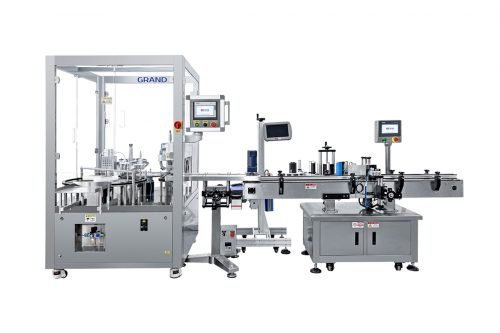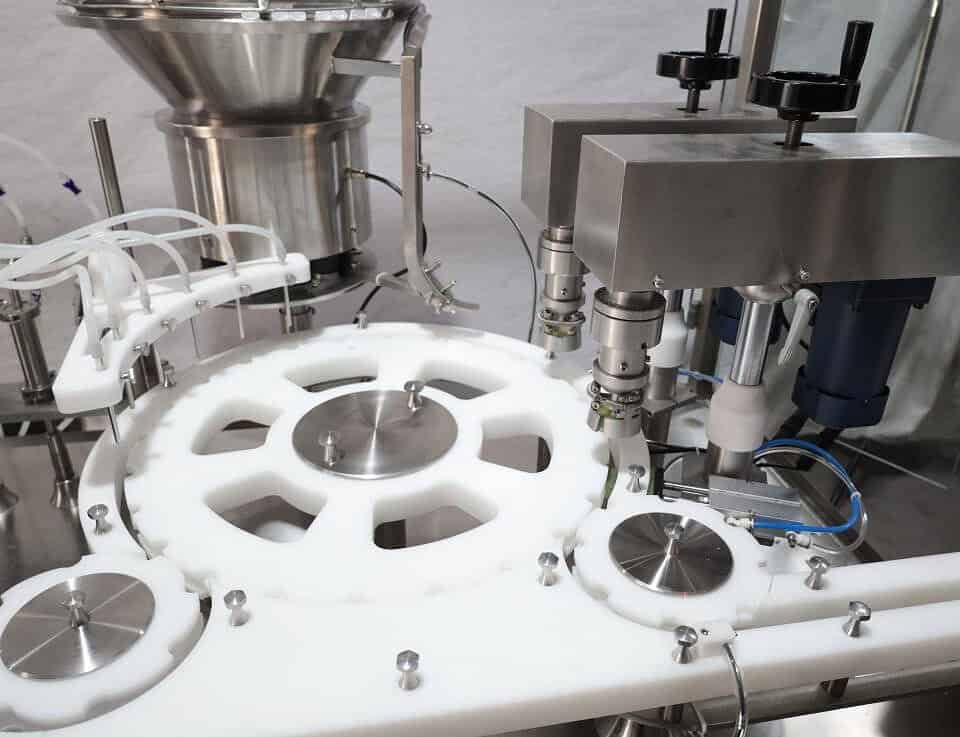
The Ultimate Guide to Capsule Polishing Machines

The Essential Role of Cartoning in Pharmaceutical, Food, and Household Packaging
Vial Filling Machines: Key to Combating Antibiotic Resistance
Introduction
The battle between humans and harmful microorganisms has entered a critical phase, with antibiotics at the forefront of our defense. However, as drug resistance continues to rise, innovative solutions are necessary to maintain the effectiveness of these life-saving treatments. In this blog, we will explore the significant role of vial filling machines in the production of antibiotics like azithromycin, how drug resistance is affecting global health, and how new technologies in vial packaging and antibiotic development can help combat these challenges.
The Growing Threat of Drug Resistance
Drug resistance, particularly to antibiotics, is one of the most pressing global health issues. Pathogens like Methicillin-resistant Staphylococcus aureus (MRSA) are becoming increasingly resistant to the drugs we rely on, making infections harder to treat. According to a report from the World Health Organization[1], antibiotic-resistant infections cause millions of deaths each year. As bacteria evolve and adapt to existing treatments, the need for new antibiotics is more urgent than ever.

Methicillin-resistant Staphylococcus aureus (MRSA) is one of a number of pathogens that have become more deadly due to antibiotic resistance. Credit: Biomedical Imaging Unit, Southampton General Hospital/Science Photo Library.
Antibiotics like azithromycin, a broad-spectrum antibiotic used to treat various infections, are becoming less effective due to resistance. Azithromycin is widely used to treat respiratory infections, skin infections, and even sexually transmitted diseases. However, the overuse and misuse of antibiotics, coupled with the ability of bacteria to evolve rapidly, are accelerating the development of drug resistance. As this issue grows, researchers and manufacturers must step up their efforts to produce antibiotics that remain effective against these evolving pathogens.
The Role of Vial Filling Machines in Antibiotic Production
Vial filling machines play a crucial role in the production and packaging of antibiotics, including azithromycin. These machines ensure that the antibiotic is accurately and efficiently filled into vials, which are then sealed and labeled for distribution. Vial filling is a critical step in ensuring the quality and safety of the drug, as improper filling can lead to contamination or dosage inaccuracies.

Grand's Vials Filling Machine Production Line
The Vial filling machine works by precisely dispensing the antibiotic into vials of various sizes. This is especially important for antibiotics that require sterile environments, like azithromycin, which is often administered in injectable form. Vial filling machines are designed to meet strict standards of cleanliness and efficiency, reducing the risk of contamination and ensuring that each vial contains the correct dosage of the drug. These machines [2]are also essential in the mass production of antibiotics, ensuring that they can be distributed quickly to healthcare providers worldwide.

In addition to ensuring proper filling, vial filling machines also contribute to the overall efficiency of the pharmaceutical manufacturing process. By automating the filling process, manufacturers can significantly reduce labor costs, improve production speeds, and enhance the overall consistency of the product. This is especially critical in the face of rising demand for antibiotics due to global health challenges, including infectious disease outbreaks.
The Impact of Azithromycin in Antibiotic Treatment
Azithromycin is one of the most commonly used antibiotics worldwide. It is a macrolide antibiotic that works by inhibiting bacterial protein synthesis, effectively stopping the growth of bacteria. Despite its effectiveness, the rise of drug resistance[3] has made it less reliable in treating infections caused by certain bacteria.
One of the main challenges in combating drug resistance to azithromycin is the overuse and misuse of the drug. In many parts of the world, antibiotics like azithromycin are used excessively to treat viral infections or are prescribed without proper diagnostic tests. This practice accelerates the development of antibiotic-resistant strains of bacteria, rendering azithromycin and other antibiotics less effective.
As antibiotic resistance becomes more widespread, pharmaceutical companies are turning to new technologies and methods to create more potent antibiotics. The development of zip pack antibiotics is one such innovation, where antibiotics are packaged in a way that preserves their potency and ensures controlled release. These new formulations can help reduce the chances of bacteria developing resistance and improve the overall efficacy of the drug.
Innovations in Vial Filling Machines for Antibiotic Production
As the need for new antibiotics and better antibiotic packaging[4] solutions grows, innovations in vial filling machines are playing a critical role in improving the production of antibiotics. Grand's Vial Filling Machine is a prime example of how advancements in technology are making the production process more efficient and adaptable to the needs of modern pharmaceutical manufacturers.

Grand's Vial Filling Machine is designed with cutting-edge features that enhance the precision and efficiency of the filling process. One of the key innovations is the machine's ability to handle sterile packaging for injectable antibiotics like azithromycin, ensuring that the drug remains free from contamination throughout the manufacturing process. This is particularly important for injectable antibiotics, where maintaining sterility is crucial for patient safety.
Another advantage of Grand’s vial filling machine is its flexibility in handling a wide range of vial sizes and types. This adaptability allows pharmaceutical companies to produce different antibiotic formulations and packaging options to meet global demand. Additionally, the machine’s high-speed operation allows for the rapid production of large volumes of antibiotics, helping to address the ongoing challenges posed by drug resistance and the need for a steady supply of effective treatments.
The Role of Vial Packaging in Preventing Drug Resistance
Proper vial packaging is not just about aesthetics; it plays a crucial role in preserving the effectiveness of antibiotics like azithromycin. The packaging helps protect the drug from environmental factors that could degrade its quality, such as light, moisture, and air. By ensuring that antibiotics are packaged in sterile, sealed vials, manufacturers can reduce the risk of contamination and ensure that the drug remains potent throughout its shelf life.
In addition, innovations in vial filling machines have made it easier to integrate advanced packaging solutions that help prevent the spread of drug resistance. For example, zip pack antibiotic packaging is designed to limit the exposure of the drug to external factors, ensuring that the antibiotic remains effective for longer periods of time. This type of packaging also makes it easier to track and trace the antibiotic’s origin, helping to prevent counterfeiting and ensuring that only authentic, high-quality drugs reach the market.
Looking Ahead: The Future of Antibiotic Production and Resistance
The fight against drug resistance is far from over, but advancements in both antibiotic development and the vial filling machine technology are helping to turn the tide. Researchers are focused on developing new antibiotics, while manufacturers are improving the efficiency and safety of antibiotic production and packaging. The vial filling machine has become a cornerstone of this effort, providing a reliable and efficient means of filling and sealing antibiotics for distribution.
As azithromycin and other antibiotics face increasing resistance, it is clear that innovation in pharmaceutical production and packaging is essential for maintaining the effectiveness of these life-saving drugs. With technologies like Grand's Vial Filling Machine, the pharmaceutical industry is better equipped to meet the growing challenges of drug resistance and ensure that antibiotics remain a critical tool in the fight against infectious diseases.
Conclusion
The continued development of new antibiotics and improvements in vial filling machines are crucial to overcoming the threat of drug resistance. As pharmaceutical companies work to produce more effective antibiotics and improve packaging solutions like zip pack antibiotics, technologies like Grand's Vial Filling Machine are helping to ensure the safe and efficient production of these life-saving drugs. In the battle between pathogens and humans, vial filling machines and innovative antibiotic formulations are helping to keep the human side ahead in the race for survival.
References
[1]."Antibiotic Resistance: A Global Threat." World Health Organization, 2023.
[2]."Pharmaceutical Packaging and Drug Resistance."Journal of Antibiotic Research, 2024.
[3]."Azithromycin: Applications and Challenges." Biomedical Journal, 2023.
[4]."The Role of Vial Filling Machines in Antibiotic Production." Pharmaceutical Engineering Journal, 2024.




